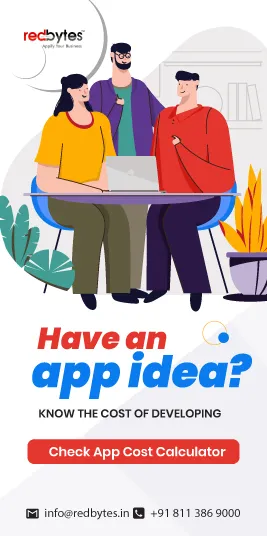Duolingo started out as a language learning app to teach and translate languages in 2011 and has, since, risen to immense popularity with annual revenue of around $140 million. And that too with its free-of-charge service to users till date.

There have been quite a few apps that followed suit, but, maybe it is the timing or there was something lacking, they have not yet been able to reach the same level of popularity.
Why Develop a Language Learning App?
Talking about timing, 2021 can be deemed as the perfect time for entrepreneurs to invest in creating learning apps, considering how there has been an increasing trend among people to learn a new language, in the past few years.
One of the main reasons why entrepreneurs should consider creating language learning apps is obviously the business side of it. There is an expected growth of 18% CAGR in the online learning market between 2019 and 2023. According to estimates, the market growth might exceed the revenue of $25.73 billion by the end of 2027.
The COVID 19 pandemic that turned the world upside down has urged many confined in their homes to pick up learning a foreign language as their new hobby. In the current circumstances, going for online learning seems to be a better option. The availability and convenience these apps offer are some of the reasons that such apps are gaining the interest of users in recent years.
Read Also : How to Create an App Like Byjus ?
Also, the growing use of social media platforms and interactions at the global level has tempted many to learn new languages.
Language learning apps use AI-powered chatbots that help the users have a different experience than those in traditional settings. Also, the technology enables users to gain new knowledge about languages, such as Welsh, Navajo, Gaelic, and Esperanto that do not exist anymore.
Where to Start?
Since Duolingo is the perfect example for a successful language learning app, let us start with knowing a little about the app and how it works.
Duolingo is a free platform to learn languages as well as to crowd source translations, with around 300 million users. Launched in 2011, the app covers around 36 languages and enables users to learn a language from scratch.
The users can join the language courses free of charge; however, there is also a premium subscription available for users, with added benefits.
Duolingo comes with an interesting set of features in order to make the learning process exciting. The training programs are divided into lessons and they are arranged based on complexity. Past the first level that mainly deals with common topics, the remaining levels focus on individual ones.
The lessons come with different exercises, in terms of reading, writing, listening, and translation, meant to help the users to easily learn grammar rules or vocabulary. The training programs are free, enjoyable, and easily accessible to the users—no wonder the app has piqued the interest of millions over the years.
The training programs of Duolingo follow a gaming format with factors, such as levels, rewards, and game currency that allow the users to buy additional features and bonuses from the store.
The app also has options to set daily goals and reminders to assess the regularity of classes. The Stories project of the app that involves interactive tasks allows the users to further develop their skills.
Features
Language learning apps come with a wide variety of features that contribute to making them interesting and easy to use for users. Some of the features that are common for different language learning apps include the following.
- User Profile
- Choose a preferred language to learn
- Exercises to understand the user’s language proficiency level
- Language practice and revision
- Lessons in the form of video, audio, and textual content
- Offline mode to download learning materials
- Courses and levels
- Push Notifications
- Integrate social media to share about achievements
- Monitor learning progress
- Consult with language experts
- Feedback, reviews, and ratings
- Invite friends to use the app and earn rewards
Apart from general features, there are some advanced features to be added to the app to reduce its complexity. Also, adding the following features can make the app appealing—one of the deciding factors for users to stay or go for another app.
Social Signup/Login
This feature enables users to sign up or log into the app using their social media accounts, without having to go through the hassle of signing up by entering information, such as username and password.
User Profile
This feature includes the personal information of users, such as age, sex, language to choose and the purpose of choosing it, set daily target. In short, this feature provides a personalized experience to the users.
Rewards
The rewarding system of the app allows users to keep track of their daily achievements and they can be rewarded accordingly. The users can be rewarded on completing their daily tasks.
Online Community
This feature is not an essential requirement but is worth it. The users can make use of this forum-like feature to communicate with each other to converse regarding topics surrounding the different topics and help each other to learn.
Live Video Conferencing
This feature allows the users to directly interact with real teachers/language experts via live-streamed video conferences. This would give the users an exciting experience and make them more confident.
User Interface
A good user interface design grabs the attention of users leading to increased user engagement. By good interface, we mean a design that looks clean and classy, and that allows hassle-free navigation. This can be achieved if you give attention even to the tiniest user requirement.
Vocabulary Learning
Basic vocabulary that enables learning from scratch is a must-have option for language learning apps. The learners are likely to rely on this feature a lot to improve their vocabulary knowledge.
Audio Clips
Language learning is not just about writing and reading. They must be able to even speak the language fluently in the end and this requires lots of hearing practice. Short audio and video clips integrated to the app can be used by users for their daily listening practice.
Chatbot
Multilingual chatbots available 24/7 with voice recognition ability is a must-have feature for language learning. This AI powered-technology can be used for teaching and in enhancing the app’s performance. Adding audio clips can enhance the pronunciation skills of users. Chatbots also enables users to improve their language skills and pronunciation.
Gamification and Animation
Though not a necessary requirement adding gamification elements in an app tends to create a positive impact on the users. This approach is capable of making the language learning process fun and interactive. Another way to gain the attention of users is to add sounds effects and animation to the app.
Competition
Competition is a part of learning process and can be used as a tool to motivate the users. Adding contests to the app on a daily, weekly or monthly basis can keep the users motivated. They would want to compete and win, and in the process achieve their learning goals in a disciplined manner.
One-on-one Tutoring
Learning a new language can be difficult and confusing at times owing to the different rules. In such cases, the one-on-one tutoring feature can be of great help to the users. They can seek assistance from a language instructor to learn.
Read Also : How to Create an App Like Unacademy ?
Language learning apps will have two users—-teachers and students. Therefore, it is important for the apps to have two separate interfaces to suit their needs. The required features from the above-mentioned list can be added to the interface depending on the user.
Teachers
Technology-based learning is effective to a great extent. But still, there are areas that would need human intervention. Real language instructors/experts can guide the learners to fulfill their ultimate goal of learning a new language to the fullest.
- Interactive and suitable UI/UX
- The interface should include features that facilitate live video conferencing, one-on-one tutoring or something similar to enable student-teacher interaction
- Teachers should be able to access the list of subjects in the dashboard
- The interface should also include features where the teachers can check assessment and prepare reports
Also Check : Latest Updated Educational Apps Directory List
Students
The ultimate target of language learning apps will always be the learners. The majority of the features of the app are meant to help them to make use of the learning process to the maximum.
- Students can use the app from any device. Therefore, the interface should be web, Android, iOS-friendly
- Multimedia and gamification features, though not a necessary requirement, can make language learning more interesting
- Features that enable the students to contact their teachers in the form of chat or emails must be included
- Features that set daily milestones for the students, which when met, will help them gain access to the next level or be rewarded
- They should be able to see the evaluation of their completed tasks and be able to track their progress
- Features that help to prioritize the lessons should also be included
Business Model
Now that you have a basic idea about language learning apps, the next thing to know about is different kind of business models that might work for your language learning app.
Subscription
The monthly and yearly subscription models allow users to pay a specific amount of money to gain access to various services of the app.
Freemium
In the Freemium (free+premium) business model, the users can access the services that are free of cost and gain access to some advanced features of the app by paying a certain amount.
One-time purchase
Sometimes users would use the app for just one course. You can use the one-time purchase model to allow users to pay for the course alone in the app.
In-app Advertisements
Duolingo has adopted the in-app advertisement model for revenue. Marketers can pay you for publishing their ads in the app.
It is always wise to first provide the app’s services for free and then move to the different premium versions to give access to the content.
Read Also: How Much Does it Cost to Make an Educational App?
Creating the App
Whether it is your own team of developers or a mobile app development company that you hire, they will have to follow few steps through the mobile app development process.
Come up with suitable content
Content is a very important factor when it comes to language learning apps. No matter how great the features and functionalities are, your app tends to lose its credibility among users without powerful content.
For language learning apps, you have to carefully pick the necessary grammar training programs, language sounds, video and audio content, etc.
Duolingo stands out among a large number of language learning apps in the market for its wide variety of content. Content covering almost all aspects of language learning is required to convince the users that your app can guarantee success in learning.
If you look into the history of the Duolingo app, the founders spent an incredible amount of time reading books based on language teaching, with them searching up about 3000 words in Google and translate it to English.
With the data gathered through their efforts, they launched the app’s web version that helped many professional linguists. Later, they added more new languages to the app as more people started showing interest towards it.
Decide on the app development platform
iOS and Android being the two popular platforms out there, it is natural for businesses to go for both. If you are capable of managing both platforms simultaneously and have enough budget, it is absolutely worth giving the users access to the application from different devices using both platforms.
However, if you are just a beginner in the language learning app business with fewer resources and budget, it is safe to launch the app over any one platform at the beginning, where a major portion of your potential audience is likely to be present.
Design UI
Users always love apps with an appealing interface and intuitive navigation. Other factors that attract the users towards an app is the sense of familiarity and ease of use.
That is why it is necessary to do lots of brainstorming and go through several rounds of trial and error before finalizing the design. The key is to keep it clean, pleasant, and unique, with user-friendly navigation to gain the attention of users.
Also, use the apt and familiar icons, and decide on its placement in order to make the browsing experience a memorable one for the users.
Decide the technology stack
The backend has an important role when it comes to the response of an app upon receiving a request. Duolingo app’s backend includes 47 technologies, Objective C, JQuery, Javascript, Nginx, Bootstrap, Amazon Cloudfront, and Amazon S3 to name a few.
You can decide on your app’s technology stack by combining technologies that meet the requirements of the project and that go with the selected platform. Before making the final decision, it is wise to consult with the app development company you hire.
Include advanced technology
In recent years, going by the standards is considered boring. Users always seek something new and interesting, and that is why gamification of apps has been quite a trend these days.
In terms of language learning apps, you can include elements such as bonuses, achievements, and awards, that would retain the users’ interest and get them emotionally involved in the app for a long time.
Chatbots are one of the technologies that have become a norm for the majority of the apps in the market these days. This AI-powered technology can help guide the users to take further actions during the training in case they are lost.
The chatbots will also engage in conversations with the users to identify their preferred foreign language choice and help them to hold conversations in the language.
Other technologies that have to be included in language learning apps include AR/VR, voice recognition, Machine Learning, Cloud Natural Language Processing, and much more.
Including these technologies in the application will simplify the working of the app and, at the same time, makes it interactive and interesting for the users.
How Much Do You Have to Spend?
The cost to develop a language learning app can vary depending on the hired mobile app development company.
There are different factors to be considered, which include
- Development team structure
- Technology stack
- Location
- Tech expertise level
- Number of app features and their complexity
The app development cost also depends on the number of hours a development team spends on the project and in case the team includes specialists, their rates would be included as well. In terms of location and professional expertise, the estimated cost would range from $25 to $150 per hour of work.
You can make use of the Redbytes App Cost Calculator to calculate the cost for developing a language learning app.
How Much Time Will It Take?
Developing a language learning app takes around 49 weeks to 79 weeks, i.e., 1 to 1.5 years if you consider it in terms of working hours. Therefore, if you have to create a language learning app in your plans, it is better to start at the earliest.
Conclusion
Creating a language learning app has its own difficulties and risks. However, with proper planning and implementation, such difficulties can be easily overcome to create a successful app.
Read Also : 20 Best Apps For Teachers & Educators 2020
If you have decided to invest in creating a language learning app, make sure that you decide on the application format and figure out the necessary details. Also, create a list of app implementation requirements and then hire developers to turn your idea into reality. Last but not the least, proper marketing support and promotion is necessary to ensure the success of your app.















